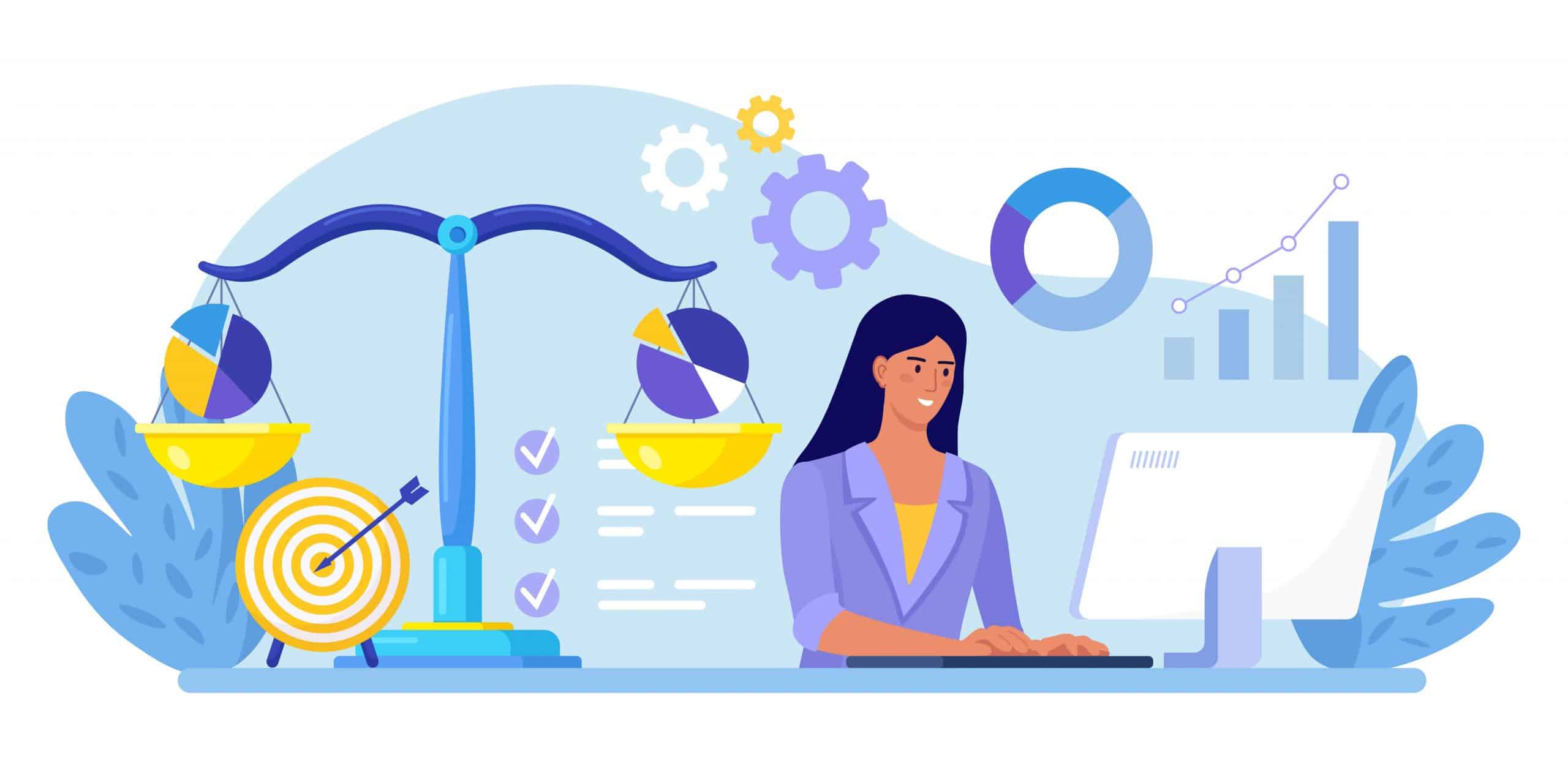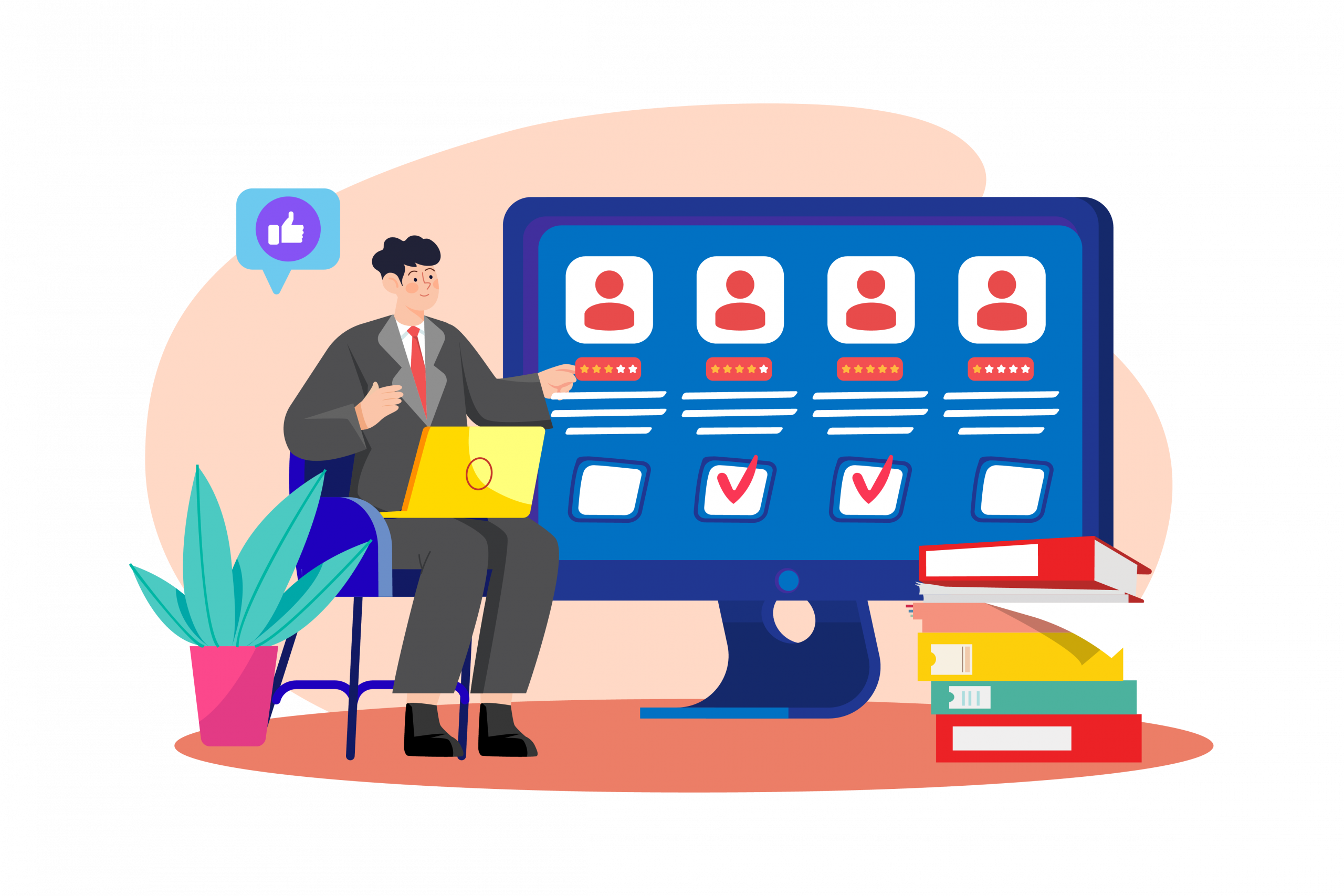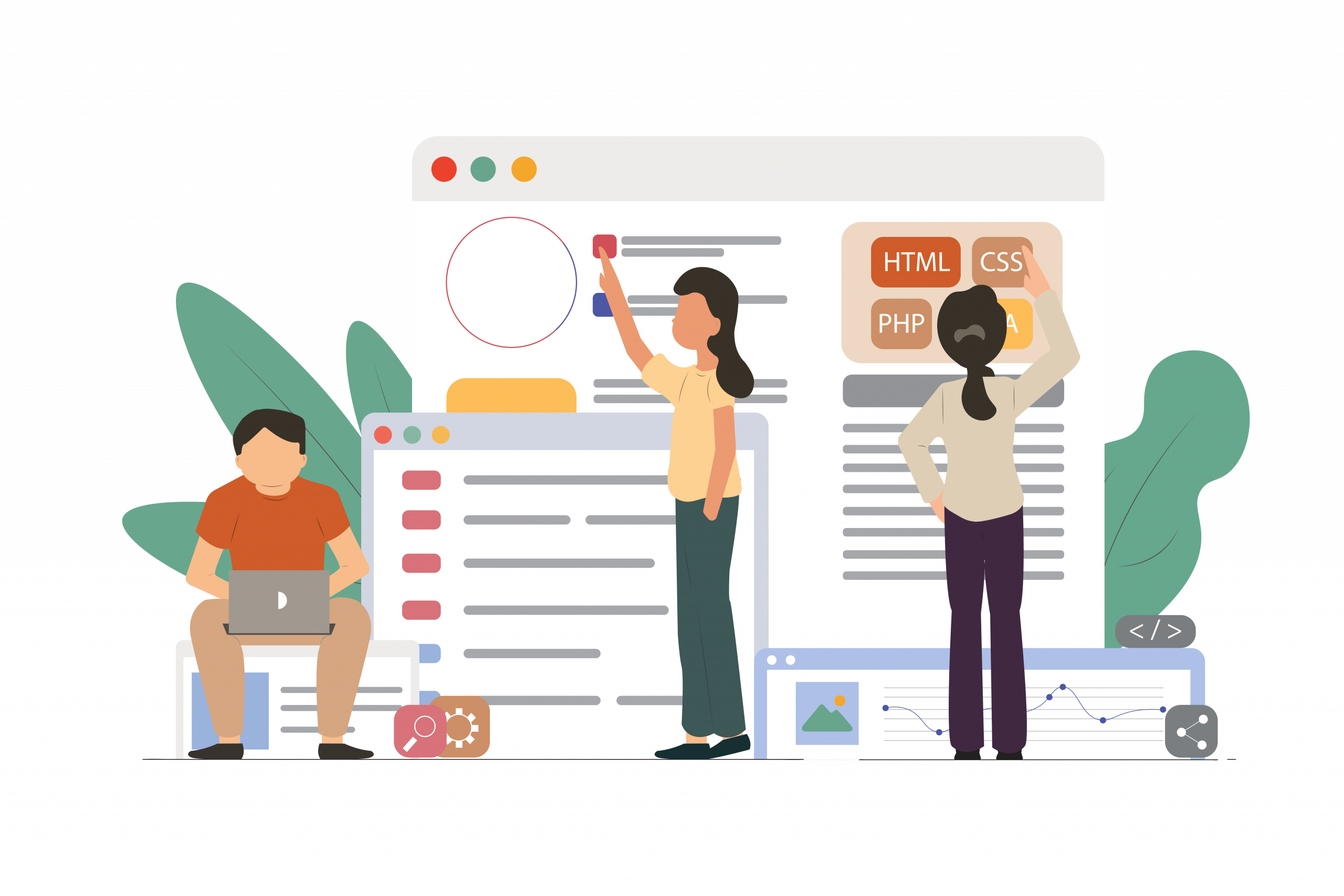Build vs buy software: let’s team up to deal with the dilemma
As the companies grow, business owners realize the need for flexible and scalable software. Companies seek solutions that address the problems limiting employee performance, increase productivity, and foster teamwork. This is when the build vs. buy software dilemma may arise. You have to consider your business needs, upfront costs, time to market, ease of deployment and maintenance to make the right choice.
In this article, GetTrusted discusses critical factors that impact the decision to buy vs. build software. This innovative marketplace helps clients find reliable IT outsourcing companies and agencies. We examine why businesses need software, identify the factors to consider, and outline the five-step decision-making process to find the right solution.

Why Do Companies Need Software?
The right software saves time on data input, accounting, and customer relationship management. Software solutions also assist businesses in keeping track of their clients, sales, and inventory. Let’s look closer at the benefits of corporate software.
- Saving time on task automation. Data input and accounting are examples of tasks that software can automate. It helps employees increase productivity and focus on more strategic and creative duties.
- Tracking customers, sales, and inventory. Businesses can use software to monitor their inventory, clients, and sales. Software-generated data lets companies control stock levels, advertising campaigns, and other customer engagement activities.
- Enhancing operational efficiency. By adopting software, businesses can increase productivity and profitability.
- Improving communication and collaboration. Teams can use the software for group tasks and brainstorming sessions to enhance internal cooperation and communication.
- Leveraging data and analytics. Adopting software simplifies data collection and analysis. Companies can use gathered data to improve decisions, understand client behavior, and predict market trends.
What is Build vs. Buy?
Let’s define what “software build vs. buy” implies. Building software requires engineering or development skills to launch the intended solution. However, low-code/no-code technologies make building solutions less dependent on programmers and more effortless for businesses.
A build solution enables customization based on business demands and lets a buyer choose how to use the software.
Buying software suggests paying for a ready-to-use solution. Software for purchase is created by a vendor to address a specific issue and is targeted at a business end user. Buy solutions often have limited flexibility and don’t require coding afterward. Point solutions are a subcategory of buying software that enhances specific business operations. Although you can quickly adopt this software, it may address particular needs at the expense of other processes and not work correctly with existing IT systems.
What to Consider Before Buying Software
Ease of Deployment
Online point software is a good option for companies seeking an immediate solution to a critical business problem. It doesn’t require the purchase of specific hardware or IT systems maintenance. It is easy to deploy and functional right out of the box.
When buying “out-of-the-box” software solutions, businesses can immediately use prebuilt features for customer support, HR onboarding, IT service management, project management, and other typical business processes. Companies don’t have to worry about scaling, software upgrades, and security as the software provider handles those things.
Lack of Custom Solution
Point solutions streamline typical business operations, such as customer relationships or IT service management. If you are looking for a custom solution that goes beyond the scope of mainstream operations, you might be disappointed by the available options.
A point solution won’t be your best option if you wish to meet evolving business needs or clients’ expectations. Prebuilt solutions are usually single-purpose and are not easily customized or updated in the future. When choosing stand-alone software, many businesses frequently adopt different systems from various vendors. It creates environments with data silos and makes system integration and teamwork challenging.
What to Consider Before Deciding to Build a Software Solution
Effort Required to Deploy
Building a valuable software solution for a company takes effort. Various company stakeholders have to participate if you want software that contributes to achieving business objectives and incorporates current solutions. You will also have to hire IT professionals or qualified developers.
Implementing a new solution might not be a good option if your company is facing a disruption to regular operations and needs bridging software for a small number of affected systems. You can create a potent platform for enhancing business operations by building software. However, you need to decide whether developing the solution is worth the efforts and investments.
Long-Term Adaptability
It’s a common misconception that you require programming knowledge to use corporate software. With basic spreadsheet skills and your current understanding of your data and processes, business software is pretty straightforward to set up and manage. You can easily customize the design and leverage your build software more flexibly than prepackaged point solutions.
Building your software can take a more significant time investment than pre-made solutions. You will need to map your processes. However, having complete control over a tool tailored to your operations and adaptable to your company’s needs can benefit you in the long run.
Build vs. Buy Software: 5-Step Decision-Making Process
You need to consider the product’s end aim to understand its impact on your company. Do you want to handle a typical business workflow or stand out in the niche? Here is a five-step process that will help you make an informed decision.
1. Identify Your Business Needs
First of all, you need to outline your business requirements. Define the pros and cons of deploying new software and the investment’s technical feasibility. Analyze your portfolio, focusing on the implementation’s complexity and commercial value. When ranking the activities’ value, consider the risks.
Finally, develop success metrics. The likelihood of success is significantly higher if you select the right KPIs to track during the planning and implementation phases. Throughout the implementation, anticipate a steady progression toward the desired goals. The shorter the measurement cycles, the more chances the project will succeed.
2. Conduct a Research
When comparing build vs. buy software solutions, keep in mind these aspects:
- Consider each option’s distinct workflows, user roles, departments, systems, and processes.
- Examine the pros and cons of each choice: what are the upfront investments and long-term benefits? How flexible and scalable is the solution?
- Assess the risks and rewards. Do the potential rewards, such as a higher level of customization and control, outweigh the risks associated with more significant investments?
Ultimately, your company’s needs will determine whether to buy vs. build software solutions.
3. Consider the Pros and Cons of Each Solution
Both buying and building software have advantages and disadvantages. The most logical is to start by researching currently available options. Compile a thorough study of the features, pricing, and solution offerings. It provides insight into the solutions’ landscape and capabilities to address your business objectives.
Examine the current and upcoming roadmaps to identify gaps or opportunities to add new features that help your business generate more income. Consider products that help to meet the needs or streamline processes. Is buying industry-specific tools a safer, faster path to value or mirrors inefficiencies? What seems reasonable can take time and effort to implement.
4. Make a Budget-Based Decision
Considering the long-term costs when deciding based on a budget is crucial. Outsourcing software can be less expensive since you won’t have to pay for continuous development and support. Building in-house software can be less costly upfront, but you will also need a budget for ongoing development and support.
Think about your business requirements. If you don’t have a sufficient budget to build the custom software you need, can you develop it yourself? Purchasing an off-the-shelf solution can be the best choice if you only need basic software. Examine each option and decide based on your financial situation and business needs.
5. Adjust to Your Changing Needs
The software you initially chose might not satisfy your changing business needs. You need to be ready to modify your decision to keep getting the most out of your software. If the functionality of your initial software doesn’t cover new business requirements, be ready to build your software or look for another solution.
On the other hand, if you first choose to build software but discover that it requires too much time and resources to maintain, you may purchase an existing product. Whatever your first choice is, as your business evolves, you must be open to changes and adapt your software to your company’s needs.
So, Should You Buy or Build Software?
If you have read all the sections above about the pros and cons of each option and still have doubts, you are not alone. The short answer to your query is: it depends. The specific business needs of your company define the best solution. When you decide your company needs to invest in new technology to solve an issue, consider all the variables before choosing.
If you need help choosing the software for your business, GetTrusted is here to help. You can specify the requirements for your corporate solution and submit them through the form on our website. We will contact the top three outsourcing agencies in your niche and provide you with a time and budget estimate within 48 hours. After you choose a vendor, we ensure all project goals are achieved. With our Escrow Plus service, we will check the quality and release the funds only when you approve it.
Find the Right Software to Tackle Your Business Needs with GetTrusted
Both building and buying software have their pros and cons. You need to outline your business requirements and research available solutions. Buying out-of-the-box software can be an option if you need basic software to address common business issues. You might need to develop your software if you seek a unique, flexible solution that surpasses typical offers. In any case, you need to balance the risks against the potential rewards carefully.
Contact us to discuss your business software needs in detail.











